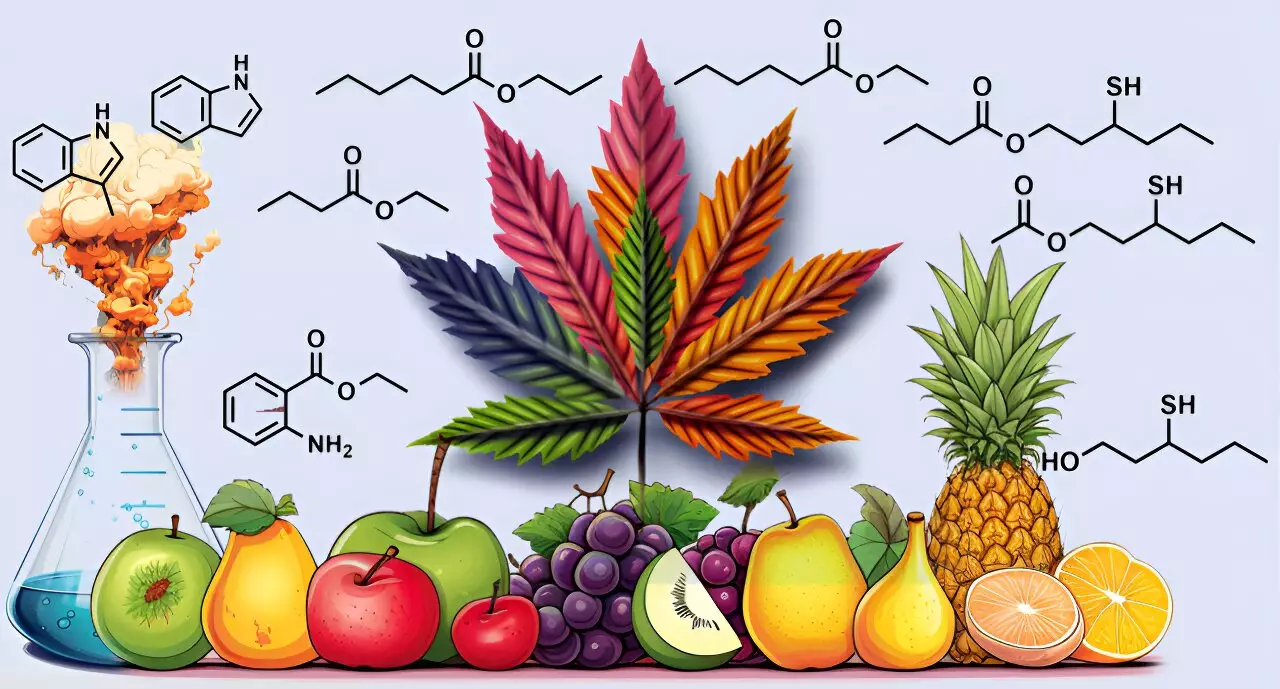Cannabis, also known as marijuana, has long been recognized for its unique and interesting effects on the human brain. But what about its distinctive smell? A team of chemists at terpene distributor Abstrax Tech sought to unravel the molecules responsible for the aromatic properties of cannabis. Through an extensive study utilizing various scientific techniques, they have made significant strides in understanding the complex chemistry behind the scent of this popular plant.
Previous research has suggested that thiols, a type of volatile sulfur compound, predominantly contribute to the smell of cannabis. However, the researchers at Abstrax suspected that there may be more compounds or molecules involved. To investigate this further, they conducted a comprehensive research effort using techniques such as mass spectrometry, gas chromatography, and flame ionization detection.
The Role of 3-Methyl-2-butene-1-thiol (321MBT)
During their investigation, the team discovered that a molecule known as 3-methyl-2-butene-1-thiol (321MBT) played a prominent role in the odor production of cannabis. This finding challenged previous theories and shed new light on the complexity of the plant’s aroma. Interestingly, 321MBT is also responsible for the distinct smells of warm beer and skunk spray.
In addition to 321MBT, the researchers identified different classes of volatile sulfur compounds that influence the variety of smells emitted by cannabis plants. These compounds contribute to the tropical, fruity, and sweet aromas commonly associated with certain strains of cannabis. Furthermore, the team discovered that a pungent compound called skatole played a crucial role in enhancing the savory undertones of the plant’s aroma.
While terpenes, essential oils found in many plants, do play a role in determining the characteristics of the cannabis odor, the study’s findings suggest that they are not the primary contributors. Instead, it is the combination of 321MBT and various VSCs that most significantly impact the distinctive smell of marijuana.
Understanding the specific components that contribute to the aromatic profile of cannabis opens up new possibilities for customized products. By manipulating the proportions of different molecules, it may be possible to create cannabis strains with unique and tailored scents. This could provide cannabis enthusiasts with a broader range of olfactory experiences and cater to individual preferences.
The study conducted by the chemists at Abstrax Tech has shed light on the complex chemistry underlying the distinctive smell of cannabis. Through their research, they discovered the prominent role of 321MBT and various volatile sulfur compounds in shaping the plant’s aroma. This knowledge not only expands our understanding of cannabis, but also has the potential to revolutionize the industry by offering customized scents in future cannabis products.



Leave a Reply